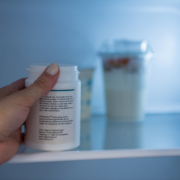The FDA’s view on the term probiotics, part 2: Further down the rabbit hole
By James Heimbach, Ph.D., F.A.C.N., JHEIMBACH LLC, Port Royal, VA
A number of weeks ago I wrote on the ISAPP blog about US Food and Drug Administration (FDA) declining to file Generally Regarded As Safe (GRAS) notices that described the subject microorganism as a “probiotic” or “probiotic bacterium” (see The FDA’s view on the term “probiotics”). Now the FDA’s response to such GRAS notices has developed additional ramifications. Let me put them into two categories: Class 1 misdemeanors that will cause FDA to reject the notice, and Class 2 misdemeanors that will probably not prevent filing, but will cause FDA to raise questions. I should note that these thoughts are based on both my own direct experiences and my repeated telephone conference calls with FDA.
Class 1 Misdemeanors
- Using the term probiotic in any way in describing or characterizing the subject microorganism or its past, present, or intended use.
- Extended discussion of benefits derived from ingestion of the microorganism in animal or human research.
- Any mention, however brief, of the potential for the microorganism to be used in dietary supplements.
Class 2 Misdemeanors
- Including brief mentions of the microorganism serving as a probiotic. E.g., if you cite a study of the microorganism that you might previously have reported as “a study of the probiotic benefits” of the microorganism, change it to simply “a study of the benefits” of the microorganism. This same caution is advised when reporting opinions from the European Food Safety Authority (EFSA) or other authoritative bodies.
- Using the word “dose” in describing intended use. Also see #4 below.
- Virtually any use of the term “dietary supplement,” including in reporting past, current, or intended uses of the strain or the species in Europe or elsewhere, by anyone.
- Even relatively brief mentions of benefits. The recommended way of handling reporting of human studies of the species or strain is to avoid any narrative at all. Simply summarize the studies in tabular form, listing the citation, study design (RCT, open-label, etc.) and objective, study population (number, sex, age, characterization such as IBS patients, malnourished children, preterm infants), test article (microorganism binomial and strain), dose (but call it “administration level”—“dose” can be seen as indicating a drug or dietary supplement), duration, and safety-related results. Include methods used to ensure that any adverse events or severe adverse events would have been reported—medical examinations, self-report questionnaires, parental questionnaires, biochemical measures, etc.—and at what time points during or after the in-life portion of the research. Avoid ANY discussion of improvements seen in the test group.
Good luck!





